After years of silence on the topic of food waste, our federal government has released a study on the topic. The Economic Research Service (ERS), the research wing of the Deptartment of Agriculture, has kicked in with a study on supermarket food loss (view the full report here).
The long-anticipated (at least in these quarters) report provides supermarket loss estimates for each individual fruit and vegetable, in addition to types of meat, poultry and seafood. Before, the USDA simply estimated a 7 percent loss rate for all fruits and vegetables and 12 percent for meats, poultry and seafood.
As we see in the summary of findings, the range of loss varies greatly. If one  generalization can be made, it’s that unusual items are wasted the most. Based on an average of two years’ data, we learn that 64 percent of mustard greens and 55 percent of papayas are squandered. In a meatier topic, 25 percent of veal and 12 percent of lamb/goat aren’t used.
generalization can be made, it’s that unusual items are wasted the most. Based on an average of two years’ data, we learn that 64 percent of mustard greens and 55 percent of papayas are squandered. In a meatier topic, 25 percent of veal and 12 percent of lamb/goat aren’t used.
On the brighter side, only 4 percent of chicken and beef and less than 1 percent of corn is wasted. King Corn, indeed.
This ERS study reminds us how much more research is needed, because it only has findings from one portion of one segment of the food chain. The authors note that the study omits data from “megastores, club stores, mom-and-pop grocery stores, or convenience stores.”
Still, it brings us one step closer to having an accurate idea on the amount of food we waste.
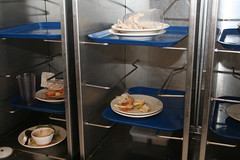 After speaking with several students, the attitudes ranged from tolerant to supportive. It’s no surprise that there isn’t much opposition there, since nary a tray has been seen since school opened in the Fall of 2007. Well, there are trays one place–in the dish return area made to accommodate them.
After speaking with several students, the attitudes ranged from tolerant to supportive. It’s no surprise that there isn’t much opposition there, since nary a tray has been seen since school opened in the Fall of 2007. Well, there are trays one place–in the dish return area made to accommodate them. I plan to observe trayless dining in action and speak to some students to get their views. More importantly, I will get a chance to put my money where my mouth is by actually eating in the dining hall without the use of a tray. How will I ever manage?!
I plan to observe trayless dining in action and speak to some students to get their views. More importantly, I will get a chance to put my money where my mouth is by actually eating in the dining hall without the use of a tray. How will I ever manage?!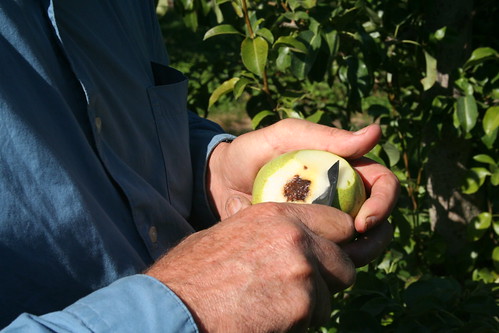

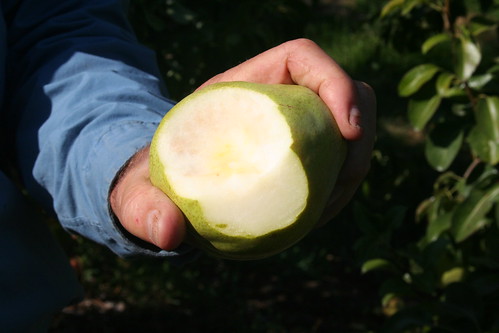
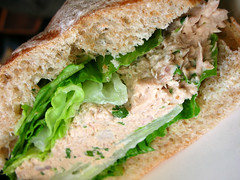
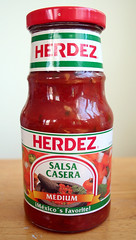 While I didn’t quite last the entire week without grocery shopping, my freezer and pantry are much more manageable. We must have eaten a lot of quesadillas, as we discovered last night that we’d exhausted our stockpile of salsa. We found out the hard way–with salsa-less burritos.
While I didn’t quite last the entire week without grocery shopping, my freezer and pantry are much more manageable. We must have eaten a lot of quesadillas, as we discovered last night that we’d exhausted our stockpile of salsa. We found out the hard way–with salsa-less burritos. It’s a great that Sodexo has removed trays at Whitworth. I just think they should keep moving in that direction.
It’s a great that Sodexo has removed trays at Whitworth. I just think they should keep moving in that direction.
 My cynical side thinks this setup exists because there’s money to be made hauling off materials, recyclable or otherwise. But waste haulers don’t benefit when folks reduce their waste. For institutional customers like colleges, though, there’s money (and maybe a planet) to be saved.Â
My cynical side thinks this setup exists because there’s money to be made hauling off materials, recyclable or otherwise. But waste haulers don’t benefit when folks reduce their waste. For institutional customers like colleges, though, there’s money (and maybe a planet) to be saved. 